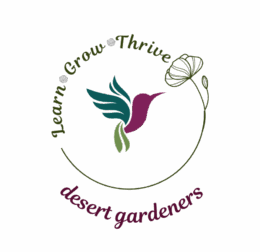Gardeners in most northern hemisphere locations are accustomed to planting in the spring. But is this the ideal time for desert planting? If not, when should you plant?
Springtime in the desert is frequently a warm and dry time, and it’s followed (of course) by summer, which can be extremely hot and dry. In the Sonoran Desert, we have a monsoon season (which can be very rainy) which generally starts around July and lasts through September; however it is very unpredictable from year-to-year. This means that spring is not always the best time to put new plants in the ground.
You can also consider planting in late winter, like in February. This can provide plants with a bit more time to get established before the serious heat comes in May. You are taking a small risk, however, that a cold spell may come and kill your brand new plants.
If the monsoon is nice and rainy, you could consider planting around August. By this time, if we’ve had a good monsoon, the ground is moist, and the heat may not be too intense. The downside is if the monsoon fizzles out early, you may end up with new plants in the ground at a time of very high temperatures and scorching sun.
So what does that leave us with? I personally like to plant leafy plants in the fall once the worst of the heat has gone. This is usually October and November, and even into December depending on the temperatures. The days are shorter, the soil is cooling off and if we get a nice rainy winter the plants will be able to establish better. They will have several months before the heat comes around again.
Note that this advice is for leafy native or near-native desert plants. The rules are different for cacti, other succulents and palms. These plants need to have warm soil in order to form new roots, so they should be planted between May and October. They also tend to be more tolerant of the sun and dry, hot air than leafy plants, due to their structure.
If you’re planting non-native food plants, that is a whole different set of rules. A number of local organizations have helpful planting calendars for non-native annual plants for those who want to have vegetable gardens. You can find these by searching for “vegetable planting calendar for [your location]”. For the Tucson area, one great resource is the Tucson Organic Gardeners Planting Guide.
Another bit of advice I’d share is that I have learned to avoid planting after a season of drought. If we are having a dry winter, for example, I generally avoid planting anything new. This is because when all of the wild-growing native plants are stressed from a dry season, all of the critters come into the yard and tend to eat the plants there. Having walls and fences helps, but it is very difficult to keep burrowing critters out, and of course insects, as well. Your plants will have a better chance of getting established if there is plenty to eat outside your yard.



